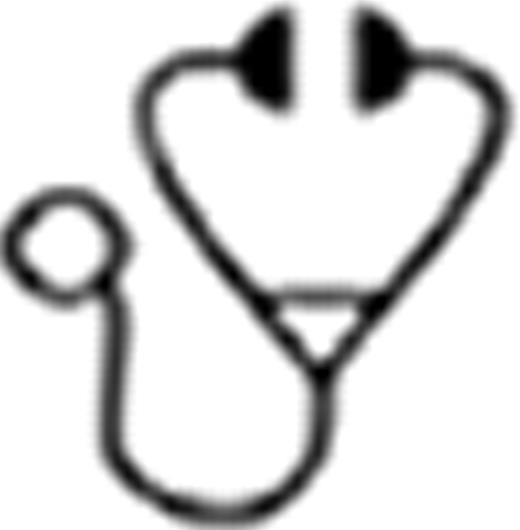Abstract
Abstract  902
902
Bendamustine (B) is an active agent for relapsed and refractory indolent NHL, both as monotherapy and combined with rituximab (R), results recently updated by the StiL study group. This study compared efficacy and safety of BR with standard treatment regimens of R-CHOP and R-CVP as first-line treatment for indolent NHL or MCL.
Patients were randomized to 6–8 cycles of BR or R-CHOP/R-CVP (R-CHOP or R-CVP determined by investigator prior to randomization). BR regimen was B 90 mg/m2/day on days 1 and 2 plus R 375 mg/m2on day 1 of a 28-day cycle. Standard dosing and 21 day cycles were used for R-CHOP and R-CVP. Primary objective was to demonstrate noninferiority of complete response (CR) rate of BR vs standard treatment (noninferiority margin [ratio] 0.88). Secondary measures included overall response rate (ORR), progression-free survival, and overall survival. Tumor response was determined by a blinded independent review committee (IRC) using International Working Group revised response criteria for malignant lymphoma. Investigator assessments were compared with those of the IRC.
Of 447 randomized patients, 436 received treatment (BR n=221; R-CHOP/R-CVP n=215 [R-CHOP n=99; R-CVP n=116]) and were evaluable for safety. Of these, 419 patients (BR n=213; R-CHOP/R-CVP n=206 [R-CHOP 97; R-CVP n=109]) were evaluable for efficacy. The randomized groups were well matched for age (median 60 and 58 years), sex (male, 61% and 59%), ECOG status (64% performance status 0, both groups), lymphoma type (83% indolent NHL, both groups), and Ann Arbor stage (62% stage IV, both groups).
Among randomized patients and efficacy evaluable patients, the IRC-assessed CR rate was numerically higher for BR than R-CHOP/R-CVP and statistically noninferior (Table). In the randomized groups, CR rates for indolent NHL were numerically similar between BR and R-CHOP/R-CVP; however, in MCL, BR was statistically superior (P=0.018) (Table). Investigator-assessed response in randomized patients found superiority of BR vs R-CHOP/R-CVP (P=0.0013). IRC and investigator assessments differed mainly in quality of response (CR vs partial) rather than in whether a patient was a responder. For randomized patients, the ORR was 94% for BR and 84% for R-CHOP/R-CVP. Time-to-event data are immature and will be analyzed later. At time of data cut-off, 8% of the BR group had progressed, relapsed, or died, compared with 4% of R-CHOP/R-CVP group.
Most patients completed 6 cycles (92% for BR and 91% for R-CHOP/R-CVP), with high relative dose intensity (>96%). Dose delays were more common for BR-treated patients (35% vs 19%), and dose reductions were less common (22% vs 29%).
Most common AEs for BR and R-CHOP/R-CVP, respectively, were nausea (139 vs 102 patients), fatigue (113 vs 107), neutropenia (76 vs 85), constipation (65 vs 90), and alopecia (8 vs 74). Laboratory grade 3/4 hematologic toxicities for BR and R-CHOP/R-CVP were lymphopenia (137 vs 64), neutropenia (98 vs 151), leukopenia (84 vs 116), thrombocytopenia (16 vs 15), and anemia (6 vs 9), respectively. The most frequent investigator-reported nonhematologic grade 3/4 AEs for BR and R-CHOP/R-CVP were infusion-related reaction (13 vs 8 patients). Granulocyte colony stimulating factors were given at investigator discretion (per ASCO recommendations) to 29% of the BR group and 43% of the R-CHOP/R-CVP group. Fatal AEs occurred in 6 BR patients (pneumonia, respiratory failure, and sepsis; acute respiratory failure; cardiac arrest; pneumonia; chronic obstructive pulmonary disease; lung cancer) and 1 R-CHOP/R-CVP patient (sepsis).
In patients with advanced indolent NHL and MCL, BR produces a CR rate that is noninferior to that of R-CHOP/R-CVP. In the subgroup of patients with MCL, BR produces a significantly higher CR rate (51% vs 24%). High ORRs were attained in both treatment groups. The AE profile of BR was distinct from that of R-CHOP/R-CVP.
Support: Teva Pharmaceutical Industries Ltd.
Complete Response Rates
| Population, Analysis . | BR % . | R-CHOP/R-CVP % . | Ratio (95% Confidence Interval) . | P value . |
|---|---|---|---|---|
| Evaluable, IRC | 31 | 25 | 1.25 (0.93–1.73) | 0.0225a |
| Randomized, IRC | 31 | 23 | 1.34 (0.98–1.83) | 0.0084a |
| Randomized, IRC NHL | 27 | 23 | 1.16 (0.81–1.65) | 0.1289a |
| Randomized IRC MCL | 51 | 24 | 1.95 (1.01–3.77) | 0.0180b |
| Randomized, investigator–assessment | 31 | 18 | 1.60 (1.14–2.25) | 0.0013b |
| Population, Analysis . | BR % . | R-CHOP/R-CVP % . | Ratio (95% Confidence Interval) . | P value . |
|---|---|---|---|---|
| Evaluable, IRC | 31 | 25 | 1.25 (0.93–1.73) | 0.0225a |
| Randomized, IRC | 31 | 23 | 1.34 (0.98–1.83) | 0.0084a |
| Randomized, IRC NHL | 27 | 23 | 1.16 (0.81–1.65) | 0.1289a |
| Randomized IRC MCL | 51 | 24 | 1.95 (1.01–3.77) | 0.0180b |
| Randomized, investigator–assessment | 31 | 18 | 1.60 (1.14–2.25) | 0.0013b |
Test for noninferiority;
Test for superiority.
IRC, independent review committee assessment.
Flinn:Teva Pharmaceuticals : Research Funding. Off Label Use: Bendamustine is FDA-approved for adults with chronic lymphocytic leukemia or indolent B-cell non-Hodgkin's lymphoma that has progressed during or within six months of treatment with rituximab or a rituximab-containing regimen. Van der Jagt:Celgene: Consultancy, Research Funding, Sponsorship Other; Novartis: Consultancy, Research Funding, sponsorship, sponsorship Other; Roche: Consultancy, sponsorship, sponsorship Other; Cephalon: Consultancy, Research Funding; Incyte: Research Funding; Xanthus: Research Funding; Bristol-Myers Squibb : Consultancy. Kahl:Roche: Membership on an entity's Board of Directors or advisory committees, Research Funding; Genentech: Membership on an entity's Board of Directors or advisory committees, Research Funding; Teva Pharmaceuticals: Membership on an entity's Board of Directors or advisory committees. MacDonald:Lundbeck: Membership on an entity's Board of Directors or advisory committees; Roche: Membership on an entity's Board of Directors or advisory committees, Research Funding. Munteanu:Teva Pharmaceutical Industries Ltd.: Employment. Clementi:Teva Pharmaceutical Industries Ltd.: Employment. Chen:Teva Pharmaceutical Industries Ltd.: Employment. Burke:Spectrum Pharmaceuticals: Consultancy.
Author notes
Asterisk with author names denotes non-ASH members.

This icon denotes a clinically relevant abstract

This feature is available to Subscribers Only
Sign In or Create an Account Close Modal